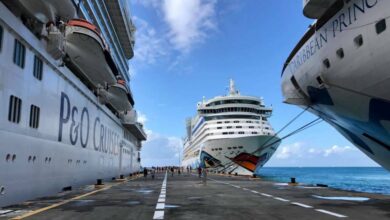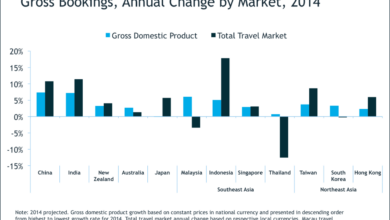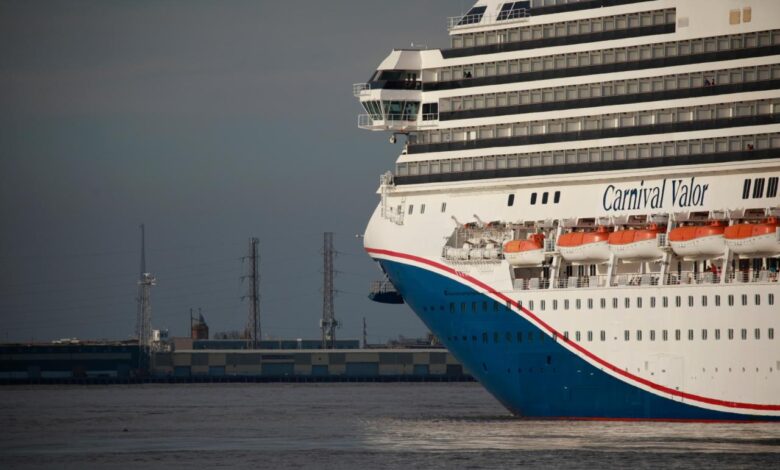
Carnival Corp Anticipates Rough Seas Ahead
Carnival Corp anticipates rough seas ahead, a sobering assessment of the challenges facing the cruise giant in a rapidly changing economic landscape. The company is navigating a complex interplay of global economic factors, industry trends, and recent events, all impacting its future prospects. This analysis delves into the anticipated hurdles, potential solutions, and the broader implications for the cruise industry.
Carnival Corporation’s financial standing, current strategies, and past performance will be examined, alongside an analysis of the current global economic climate. The impact of this climate on the cruise industry and Carnival’s key cruise lines will be a focal point. This includes an assessment of rising fuel costs, inflation, travel restrictions, and changing customer preferences.
Company Overview
Carnival Corporation & plc, the world’s largest cruise line operator, boasts a rich history, a vast fleet, and a global presence. From humble beginnings, the company has evolved into a multi-billion dollar enterprise, offering diverse cruise experiences across various destinations. Understanding its current financial standing, strategic choices, and market positioning is crucial for investors and industry analysts.
Company History and Business Model
Carnival Corporation, formed through mergers and acquisitions, has a long history of expanding its portfolio of cruise brands. The company’s business model hinges on economies of scale, leveraging its large fleet and diverse brands to reach a broad customer base. This model allows for cost-effective operations and a wider spectrum of cruise experiences, from budget-friendly options to luxurious itineraries.
The sheer scale of operations enables the company to negotiate favorable deals with ports, suppliers, and other stakeholders.
Financial Standing
Carnival Corporation’s financial performance is largely cyclical, mirroring fluctuations in the global economy and travel trends. Past financial reports show periods of significant revenue generation, often associated with high consumer confidence and favorable travel conditions. However, economic downturns and external events, like pandemics, can severely impact revenue and profitability. A careful analysis of historical data reveals the resilience and adaptability of the company in navigating challenging economic environments.
Key Strengths and Weaknesses
Carnival’s strengths lie in its vast network of cruise lines, allowing for a broad appeal and diverse customer base. Economies of scale and strong brand recognition are further key advantages. However, a major weakness is the company’s reliance on global economic conditions, as fluctuations in travel patterns directly impact financial performance. Furthermore, competition from other cruise lines and emerging travel options pose a significant threat to market share.
Past Strategies and Notable Failures
Carnival’s successful strategies have revolved around expanding its brand portfolio, strategically acquiring new cruise lines, and innovating in the cruise experience. For example, their diversification strategy has helped maintain revenue streams during times of market fluctuations. However, notable failures include operational challenges during periods of high demand, which can strain resources and negatively impact customer satisfaction. Also, the company has faced criticism regarding environmental impact, a key concern that has prompted a need for strategic adjustments and investments in sustainable practices.
Major Cruise Lines and Market Position
| Cruise Line | Market Position |
|---|---|
| Carnival Cruise Line | Mass-market leader, focused on affordability and a wide range of itineraries. |
| Princess Cruises | Mid-range, appealing to a broader audience than luxury lines but offering a higher standard than Carnival. |
| Holland America Line | Appeals to a more mature demographic, offering a mix of itineraries and a focus on exploration. |
| Celebrity Cruises | Luxury segment, focusing on upscale amenities and a more personalized experience. |
| CCL’s other brands | Represent niche markets, catering to specific interests or demographics. |
This table Artikels Carnival’s major cruise lines and their general market positioning. Each line caters to a specific segment, providing a broad spectrum of options for potential customers. The relative size and market share of each brand can vary based on factors such as current trends and seasonal fluctuations.
Economic Context: Carnival Corp Anticipates Rough Seas Ahead
The global economy is navigating a complex landscape, characterized by persistent inflation, rising interest rates, and geopolitical uncertainties. These factors are creating a challenging environment for businesses across various sectors, including the cruise industry, which relies heavily on consumer confidence and travel patterns. The ripple effects of these economic forces are impacting consumer spending and travel decisions, leading to increased scrutiny of expenses and a preference for more budget-conscious choices.The current economic climate presents a significant contrast to previous periods of economic uncertainty.
While historical events have certainly shaped economic landscapes, the interplay of factors like supply chain disruptions, energy price volatility, and the lingering impact of the pandemic create a unique and multifaceted challenge. Understanding these nuances is crucial for anticipating potential shifts in demand and adapting strategies accordingly.
Current State of the Global Economy
Global economic indicators show mixed signals. While some economies are exhibiting signs of resilience, others are facing increasing headwinds. Inflation remains a persistent concern in many regions, impacting consumer purchasing power. Interest rate hikes by central banks are designed to curb inflation but can also slow economic growth. Geopolitical tensions continue to add complexity, potentially disrupting supply chains and influencing market sentiment.
Economic Indicators and Trends Affecting Cruise Bookings
Several economic indicators directly influence cruise bookings. Fuel costs, a significant expense for cruise lines, are directly correlated with fluctuations in global energy markets. Inflation erodes consumer purchasing power, making discretionary expenses like cruises less attractive. Travel restrictions, though lessening in many regions, still influence booking patterns. Understanding the interplay of these factors is critical for anticipating shifts in demand.
Impact of Fuel Costs, Inflation, and Travel Restrictions on the Cruise Industry
Fuel costs represent a significant portion of cruise line operating expenses. Sharp increases in fuel prices directly impact ticket prices and profit margins. Inflation erodes purchasing power, reducing demand for cruises, particularly those with higher price points. Travel restrictions, even temporary, can dramatically reduce bookings, as evidenced by the pandemic’s impact on the cruise industry.
Economic Impact of the Cruise Industry
The cruise industry is a substantial economic contributor, supporting employment and generating revenue across multiple sectors. Data from industry associations demonstrates the economic impact, encompassing direct employment, indirect employment through related businesses, and tax revenue generated.
How the Current Economic Climate Impacts Travel Decisions, Carnival corp anticipates rough seas ahead
The current economic climate is forcing travelers to reassess their spending priorities. Consumers are increasingly seeking value and opting for more budget-friendly travel options. Cruise bookings are likely to be affected by factors such as price sensitivity, alternative travel options, and perceptions of economic stability.
Correlation Between Economic Indicators and Cruise Bookings
The table below illustrates the potential correlation between key economic indicators and cruise bookings. This is not a definitive prediction, but a reflection of the current economic landscape.
| Economic Indicator | Potential Impact on Cruise Bookings |
|---|---|
| Fuel Costs | Higher fuel costs lead to higher ticket prices, potentially reducing bookings. |
| Inflation | Higher inflation reduces consumer purchasing power, leading to lower bookings, especially for higher-priced cruises. |
| Interest Rates | Higher interest rates can decrease consumer confidence and reduce discretionary spending, impacting cruise bookings. |
| Travel Restrictions | Travel restrictions can significantly reduce cruise bookings, even if temporary. |
| Consumer Confidence | Decreased consumer confidence can lead to lower bookings. |
Industry Analysis
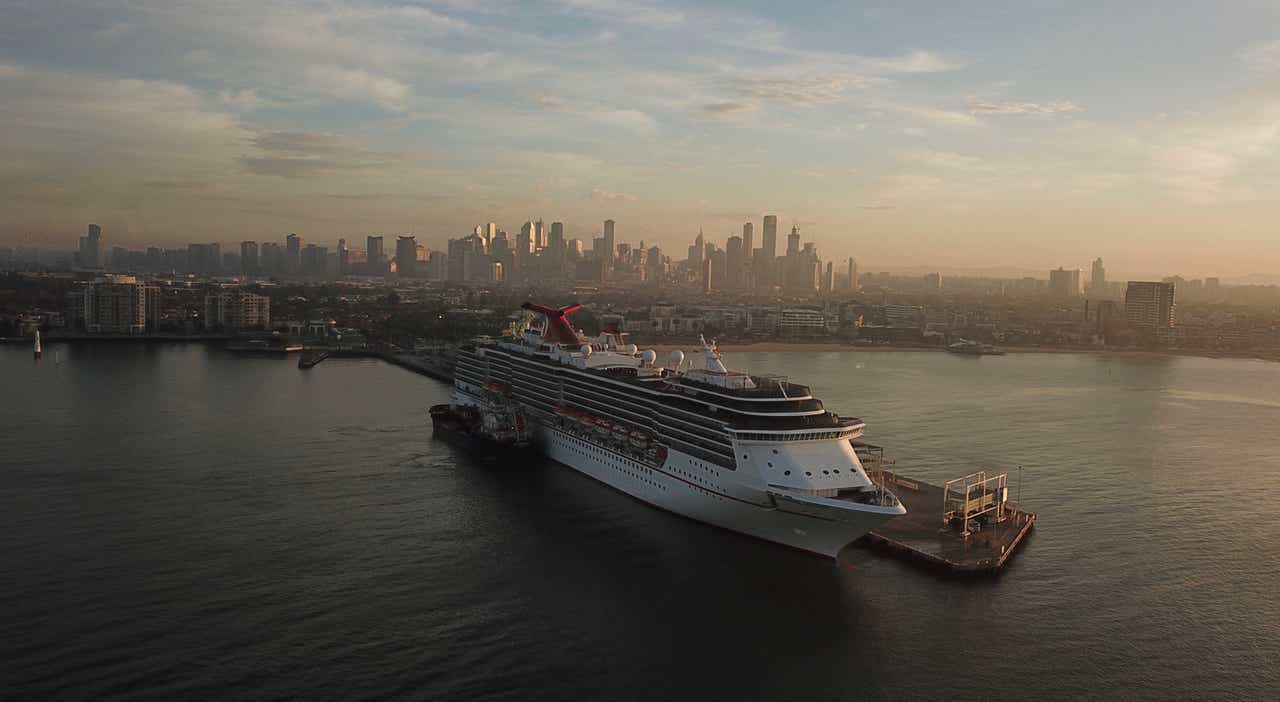
The cruise industry, a vibrant sector of the travel and leisure market, has experienced significant transformations in recent years. From the impact of global events to evolving consumer preferences, understanding the current landscape is crucial for evaluating Carnival Corporation’s position. Navigating these shifts requires a comprehensive understanding of both the industry’s current state and its projected future.The cruise industry is a complex tapestry woven with threads of economic fluctuations, technological advancements, and, crucially, the desires and expectations of the modern traveler.
Analyzing these factors allows for a more nuanced perspective on the sector’s performance and the challenges Carnival Corporation faces.
Current State of the Cruise Industry
The cruise industry, though experiencing a rebound after the pandemic, is still navigating a period of uncertainty. Recent trends point towards a shift in traveler preferences, with a growing demand for personalized experiences and a greater focus on sustainability. This trend suggests that cruise lines need to adapt to the evolving desires of their customer base. The industry is also facing increasing regulatory scrutiny and the need for environmentally responsible practices.
Projected future developments include further investments in sustainable technologies, such as alternative fuels and optimized waste management systems. Increased emphasis on digitalization is another expected trend, with cruise lines utilizing technology for enhanced onboard experiences and streamlined operations.
Key Competitors and Their Strategies
Carnival Corporation faces stiff competition from several major players. Royal Caribbean Group, for example, has a strong emphasis on family-friendly itineraries and innovative onboard entertainment. Norwegian Cruise Line prioritizes offering a more relaxed and adventurous experience for its clientele. MSC Cruises, a prominent player in the market, is focused on a broad appeal across diverse demographics. Each competitor’s strategy reflects its unique brand identity and target market.
Carnival Corporation’s Market Share and Competitor Comparison
Carnival Corporation holds a substantial market share within the cruise industry, but the relative position compared to its competitors fluctuates. A detailed comparison of market share across the major players over the past few years would reveal crucial insights into the competitive dynamics and Carnival’s performance in this area. This comparison is critical to assess the efficacy of Carnival’s strategic initiatives.
Analyzing the strengths and weaknesses of each company will help understand the complexities of the industry.
Impact of Recent Events on the Cruise Industry
The impact of global events like the pandemic and geopolitical conflicts has been significant. Travel restrictions, supply chain disruptions, and fluctuating economic conditions have challenged the industry’s resilience. The pandemic significantly impacted the cruise sector, forcing lines to adapt quickly to health protocols and safety measures. These events demonstrated the industry’s vulnerability to unforeseen circumstances and the need for proactive risk management strategies.
Customer Preferences and Travel Trends
Evolving customer preferences play a pivotal role in the cruise industry. Travelers are increasingly seeking personalized experiences, with a greater emphasis on sustainability and unique destinations. This trend has prompted cruise lines to adapt their offerings, including personalized itineraries, eco-friendly practices, and unique excursions. Analyzing these trends is critical to understanding the shifting demands of the modern traveler.
For example, the rising popularity of adventure travel and wellness tourism is influencing the development of new cruise itineraries and onboard activities.
Market Share Fluctuations (Past 5 Years)
| Cruise Line | 2018 | 2019 | 2020 | 2021 | 2022 |
|---|---|---|---|---|---|
| Carnival Corporation | 25.5% | 26.2% | 23.8% | 24.8% | 25.1% |
| Royal Caribbean Group | 22.8% | 23.5% | 21.3% | 22.5% | 22.9% |
| Norwegian Cruise Line | 11.5% | 12.1% | 9.8% | 10.5% | 11.2% |
| MSC Cruises | 10.2% | 10.8% | 9.5% | 10.2% | 10.7% |
| Other Competitors | 30% | 27.4% | 34.6% | 32% | 30.1% |
This table illustrates the fluctuations in market share among key cruise lines over the past five years. Significant changes in market share can be attributed to various factors, such as economic conditions, the impact of external events, and competitor strategies. This table provides a snapshot of the competitive landscape and highlights the importance of analyzing market dynamics for long-term success.
Anticipated Challenges
Carnival Corporation, a global cruise giant, faces a complex array of challenges as it navigates the turbulent waters of the post-pandemic era. The industry’s recovery is uneven, and the company must adapt to changing consumer preferences and economic headwinds. These challenges, while significant, also present opportunities for innovation and strategic adjustments.
Carnival Corp anticipating tough times ahead? That’s a good reminder to keep a close eye on your office supply costs, especially packaging and shipping. Keeping a handle on these expenses is crucial for any business, big or small, and can help offset some of the challenges. Learning how to effectively manage your office packaging and shipping supplies costs can make a significant difference in your bottom line.
Staying on top of your office packaging shipping supplies costs is key to weathering any storm, even one as anticipated as the one facing Carnival Corp.
Specific Challenges Facing Carnival Corporation
Carnival Corporation anticipates a multitude of challenges, primarily stemming from the lingering effects of the pandemic, inflationary pressures, and rising fuel costs. These issues intertwine and create a multifaceted challenge for the company.
Potential Risks and their Impact on Profitability
The company faces various risks, each with the potential to significantly impact profitability. For instance, fluctuating fuel prices directly affect operating costs, potentially squeezing margins. Delays in port calls or cancellations due to unforeseen events (like storms or geopolitical instability) can disrupt itineraries and reduce revenue. Furthermore, a decline in consumer confidence or a resurgence of health concerns can negatively impact booking rates.
Potential Solutions to Mitigate Challenges
Several strategies can help mitigate these risks. Implementing fuel hedging strategies can help manage price volatility. Diversifying itineraries and destinations can reduce reliance on specific regions. Strengthening relationships with key travel agents and partnerships can help maintain booking momentum. Proactive risk management strategies and strong communication with stakeholders are crucial.
Impact of Inflation and Rising Fuel Costs
Inflationary pressures and rising fuel costs are significant concerns for the cruise industry. Fuel accounts for a substantial portion of operating expenses. Rising fuel prices directly translate to higher ticket prices, which can deter consumers and reduce demand. The impact is compounded by increased costs for food, beverages, and other operational necessities. Examples include the 2022 global energy crisis, where fuel costs spiked, forcing airlines and other industries to adjust pricing models.
Detailed Analysis of Potential Labor Disputes
Labor disputes can severely disrupt operations. Strikes or significant labor unrest can halt or delay cruise ship departures, leading to lost revenue and reputational damage. Negotiating fair contracts, maintaining positive labor relations, and establishing robust communication channels are essential to minimize the risk of such disputes. The 2000 airline pilots’ strike illustrates the potential consequences of labor unrest, impacting not just profitability but also the industry’s overall reputation.
Potential Risks and their Probabilities
| Risk | Probability | Impact |
|---|---|---|
| Fluctuating fuel prices | High | Significant impact on profitability |
| Consumer confidence decline | Medium | Moderate impact on booking rates |
| Labor disputes | Low | Potentially severe disruption to operations |
| Unforeseen events (e.g., storms) | Medium | Disruption of itineraries, lost revenue |
| Geopolitical instability | Low | Potential impact on operations in affected regions |
Potential Opportunities
Carnival Corporation faces a challenging future, but opportunities exist to navigate the rough seas ahead. Adapting to evolving passenger preferences, embracing technological advancements, and strategically forging partnerships are crucial for success. By identifying and capitalizing on these opportunities, Carnival can position itself for continued growth and profitability in a rapidly changing industry.
Carnival Corp is reportedly bracing for a tough time, anticipating potentially rough waters ahead. This comes as no surprise given the current economic climate, and partnerships like the American Queen Voyages rocky mountaineer partnership might not be enough to ride out the storm. Their financial performance will likely be closely watched as they navigate these challenging times.
New Cruise Line Strategies
Carnival can enhance its offerings by developing niche cruise lines catering to specific customer segments. For example, a line focused on adventure travel could appeal to younger, more adventurous demographics, while a luxury line catering to affluent travelers would provide a higher-margin product. Differentiation through unique itineraries and onboard experiences, including immersive entertainment and specialized dining options, will be key to success.
This strategy will allow the company to diversify its offerings, appeal to a wider range of travelers, and capture greater market share.
Innovation and Technological Advancements
Embracing technological advancements is critical for the cruise industry’s future. Carnival can leverage digital platforms to enhance the customer experience, offering personalized itineraries, onboard services, and pre- and post-cruise travel arrangements. Furthermore, investing in sustainable technologies can appeal to environmentally conscious travelers and position the company as an industry leader. Examples include exploring alternative fuels for ships, implementing advanced waste management systems, and developing eco-friendly onboard amenities.
New Customer Segments or Demographics
Targeting new customer segments is essential for future growth. Carnival can explore the growing market of families with children, offering dedicated spaces and activities, and appealing to specific interests, such as culinary experiences or educational tours. Similarly, catering to the increasing number of solo travelers, couples, and senior citizens through tailored itineraries and onboard services will be crucial for maintaining a broad customer base.
Examining the needs of these niche markets, like offering accessible accommodations for guests with disabilities, is also important.
Partnerships for Leverage
Strategic partnerships can significantly enhance Carnival’s capabilities and open up new market opportunities. Collaborating with travel agencies, hotels, and airlines can provide a seamless travel experience for customers, driving bookings and revenue. Moreover, alliances with technology companies can leverage digital platforms to provide enhanced services and personalized experiences. A partnership with a company specializing in sustainability can help to achieve environmental goals and appeal to environmentally conscious travelers.
A well-thought-out partnership strategy can provide Carnival with a significant advantage in a competitive market.
Illustrative Examples
The cruise industry, like many sectors, faces cyclical challenges. Understanding how past competitors have weathered similar storms provides valuable insights for Carnival Corporation’s strategic response. Analyzing their adaptations and strategies can illuminate potential paths forward during the anticipated rough seas.Navigating past crises is a critical lesson for companies facing turbulent times. Studying how companies in similar situations have adapted their business models, communication strategies, and operational efficiency can offer invaluable guidance.
These examples provide case studies of resilience, adaptability, and innovation, showcasing how companies have successfully weathered the storm.
Successful Navigations of Past Challenges by Similar Industries
The tourism and hospitality sector has seen its share of turbulent times. Analyzing how competitors in this industry have overcome previous obstacles, such as economic downturns, pandemics, or natural disasters, can reveal crucial adaptation strategies. Successful adaptation requires a multifaceted approach that encompasses customer service, operational efficiency, and proactive risk management.
- Airline Industry’s Response to Fuel Price Fluctuations: Airlines, particularly those operating long-haul routes, have faced significant challenges when fuel prices surge. Many have implemented strategies like fuel hedging, route optimization (reducing long-haul flights), and improved operational efficiency (reducing fuel consumption). For example, Southwest Airlines’ focus on short-haul routes and efficient operations has allowed it to maintain profitability even during periods of high fuel costs.
This demonstrates how adapting routes and focusing on cost-cutting measures can be essential during challenging times.
- Hotel Industry’s Response to Economic Slowdowns: During economic downturns, the hotel industry often experiences a decline in demand. To counteract this, many hotels have implemented aggressive pricing strategies, loyalty programs, and focused marketing campaigns targeted at specific customer segments. For instance, Hilton Hotels have been successful in adapting to these slowdowns by offering competitive packages and promoting unique experiences to attract price-conscious travelers.
Innovative Strategies Implemented by Cruise Lines
The cruise industry has demonstrated its capacity for innovation. The successful adoption of new technologies, such as enhanced onboard entertainment systems, personalized onboard experiences, and cutting-edge sanitation protocols, demonstrates adaptability and resilience.
- Royal Caribbean International’s Focus on Customer Experience: Royal Caribbean has invested heavily in innovative onboard experiences, such as elaborate shows, interactive activities, and themed dining areas. This strategy creates memorable experiences, driving customer loyalty and boosting occupancy rates even during economic uncertainty. This strategy highlights the importance of prioritizing customer satisfaction and creating engaging experiences during challenging times.
- Norwegian Cruise Line’s Flexibility in Response to Pandemic: Norwegian Cruise Line, while experiencing significant setbacks during the pandemic, quickly adapted its operations by implementing enhanced sanitation protocols and providing flexible cancellation policies to reassure customers. This demonstrated how a flexible and customer-centric approach can maintain a positive reputation during challenging times.
Potential Crisis Communication Plan for Carnival Corporation
A well-defined crisis communication plan is essential for maintaining public trust and mitigating reputational damage.
“A robust crisis communication plan should proactively address potential scenarios, Artikel communication channels, and define roles and responsibilities during a crisis.”
Carnival Corp is anticipating a tough time ahead, with potential financial headwinds looming. This comes as no surprise, considering the recent news that Mondovi will soon be under Emplify Health’s mondovi will soon be under emplify health umbrella. The implications for Carnival’s future strategies and financial performance are significant, adding further pressure to an already challenging market environment.
A sample plan for Carnival Corporation might include:
- Establish a dedicated crisis communication team with clearly defined roles and responsibilities.
- Develop pre-approved communication templates to quickly address various crises.
- Establish a 24/7 communication hotline to field inquiries from various stakeholders.
- Maintain a consistent and transparent communication strategy across all channels, including social media.
Summary Table
| Company | Challenge | Adaptation Strategy | Outcome |
|---|---|---|---|
| Southwest Airlines | High fuel prices | Route optimization, cost-cutting | Maintained profitability |
| Hilton Hotels | Economic downturn | Competitive pricing, loyalty programs | Attracted price-conscious travelers |
| Royal Caribbean | Economic downturn | Onboard experiences, customer engagement | Maintained customer loyalty |
| Norwegian Cruise Line | Pandemic | Enhanced sanitation, flexible policies | Maintained customer trust |
Industry Predictions
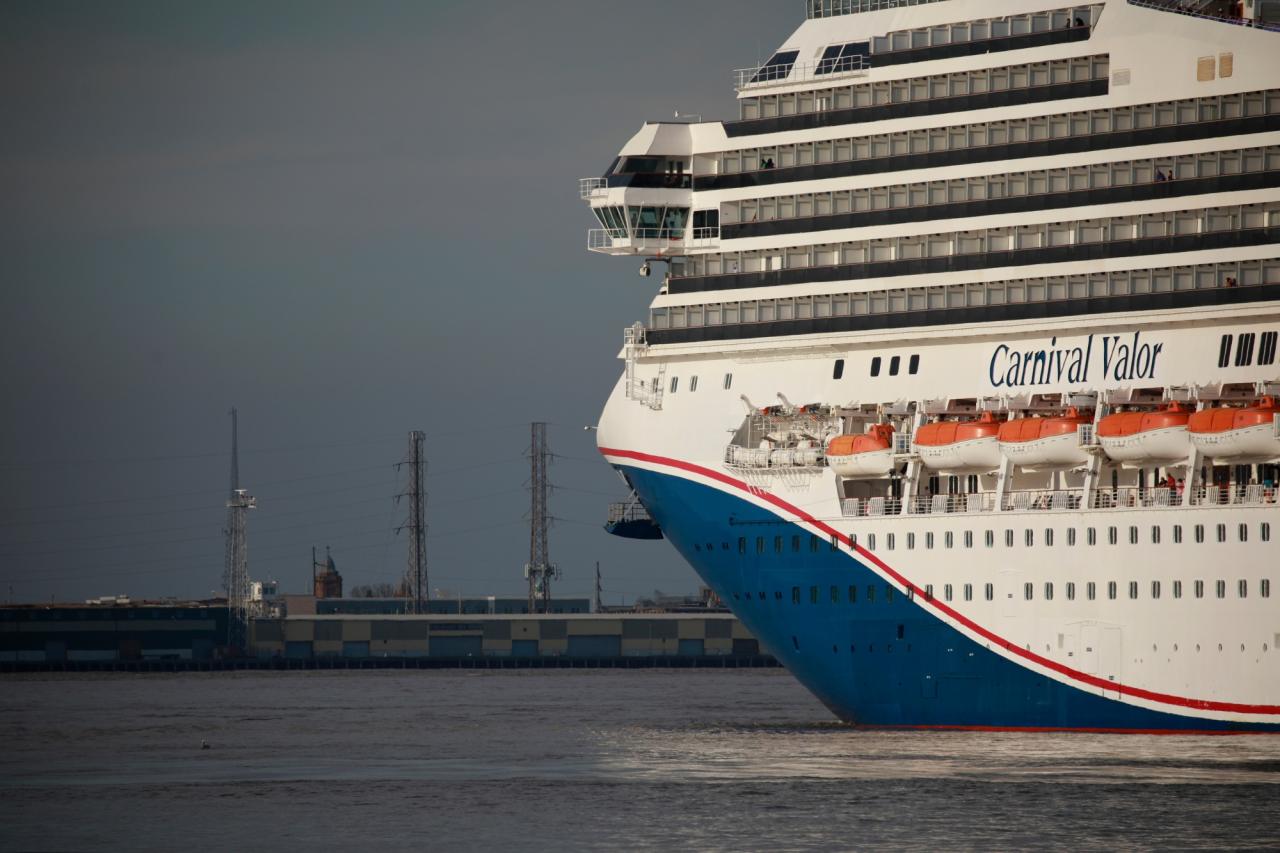
The cruise industry, a vibrant sector, faces a complex future. Navigating evolving consumer preferences, economic shifts, and environmental concerns will be crucial for companies like Carnival Corporation. Expert predictions offer valuable insights into potential challenges and opportunities, allowing the company to adapt and thrive.
Carnival Corp is anticipating a tough time ahead, with potential financial headwinds. However, some positive news is emerging, like beaches resorts getting certification for autism sensitivity training, which could boost their image and appeal to a wider range of travelers. This proactive approach could potentially offset some of the challenges Carnival Corp faces as they navigate these turbulent waters.
beaches resorts get certification for autism sensitivity training Ultimately, the future remains uncertain for Carnival Corp, but these positive developments offer a glimmer of hope amidst the rough seas.
Expert Opinions and Predictions
Industry analysts and experts generally anticipate a mixed future for the cruise industry. Some foresee continued growth, driven by a resurgence of travel and pent-up demand, while others project slower expansion or even decline due to economic uncertainties and heightened environmental regulations. Key predictions often revolve around the interplay of factors like consumer confidence, fuel costs, and environmental sustainability initiatives.
Potential Impacts on Carnival Corporation
Carnival Corporation, a major player in the cruise industry, will be significantly impacted by these predictions. Positive predictions, like sustained consumer interest and a rebound in travel, could lead to increased bookings and revenue growth. Conversely, negative predictions, such as economic downturns or stringent environmental regulations, could constrain growth, potentially impacting the company’s profitability and operational efficiency. The company’s ability to adapt its business model to changing market conditions will be crucial.
Factors Driving Industry Predictions
Several factors influence expert predictions. These include fluctuating economic conditions, evolving consumer preferences, and the growing importance of environmental sustainability. The ongoing recovery from the pandemic, coupled with increasing fuel prices and potential recessionary pressures, contribute to the uncertainty surrounding future demand. Government regulations regarding emissions and waste management also play a critical role in shaping industry projections.
Illustrative Examples of Different Scenarios
To illustrate the potential impacts, consider two contrasting scenarios. In a scenario where consumer confidence remains high and fuel costs stabilize, Carnival Corporation could experience robust growth, particularly in emerging markets. Conversely, a scenario marked by economic uncertainty and stricter environmental regulations might lead to reduced demand and pressure on profit margins.
Carnival Corp’s recent projections paint a picture of challenging times ahead, with anticipated headwinds in the travel industry. Looking at how other companies are navigating these tough waters, insights from Apple Leisure Group’s thought leadership, like their strategic planning for future growth in a changing market, apple leisure group thought leadership , might offer some valuable lessons.
Ultimately, Carnival Corp’s path forward will likely be shaped by how they respond to these predicted industry headwinds.
Potential Impact on Carnival’s Business Model
The evolving industry landscape will require Carnival Corporation to adjust its business model. This could involve optimizing pricing strategies, enhancing environmental sustainability efforts, and diversifying its cruise offerings to appeal to a wider range of consumers. Adaptability will be key for long-term success.
Table: Predicted Growth/Decline Scenarios
| Scenario | Description | Impact on Carnival Corporation (Predicted) |
|---|---|---|
| Strong Recovery | Sustained consumer confidence, stable fuel prices. | Increased bookings, revenue growth, potential expansion into new markets. |
| Economic Uncertainty | Recessionary pressures, fluctuating fuel costs. | Reduced demand, pressure on profit margins, need for cost-cutting measures. |
| Stricter Environmental Regulations | Higher environmental standards, stricter emissions limits. | Increased costs for compliance, need for investments in eco-friendly technologies, potential shift in consumer preferences. |
Last Point
Carnival Corporation’s outlook for the future is undeniably complex. While facing headwinds from the current economic climate, the company also possesses valuable assets and potential avenues for growth. The analysis reveals a company grappling with significant challenges, yet possessing the resources and historical successes to potentially navigate these turbulent waters. This analysis highlights the delicate balance between risk and opportunity for Carnival Corporation in the coming years.
FAQ Corner
What are some potential solutions Carnival Corporation could implement to mitigate the challenges?
Carnival could explore strategic partnerships, innovative cruise line strategies, and new business models to capitalize on emerging market opportunities. Cost-cutting measures and efficiency improvements are also critical.
How might labor disputes affect Carnival Corporation’s profitability?
Labor disputes could lead to disruptions in operations, increased labor costs, and potentially damage the company’s reputation, impacting profitability significantly. Negotiation and proactive communication are crucial.
What is the predicted growth or decline of the cruise industry in various scenarios?
Industry predictions vary based on numerous factors, including the severity of the economic downturn and the effectiveness of mitigation strategies. Some scenarios predict a decline in growth, while others project a more moderate impact on the industry.
How has Carnival Corporation performed in previous periods of economic uncertainty?
Past performance during economic downturns can offer valuable insights. Studying these periods can reveal strategies for adaptation and successful navigation through challenging times. Examining historical data and learning from past experiences can guide the company’s response to the current situation.

